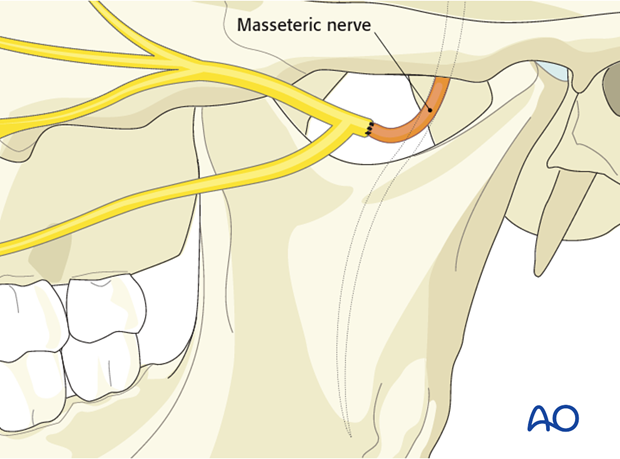Reinnervation with masseteric nerve transposition
1. Introduction
There are several options to power the facial nerve. The commonest options include:
- Cross face (contralateral VII)
- Masseteric nerve
- Hypoglossal (XII)
Selective reinnervation can be considered in which a local nerve is used for eye closure and the masseteric nerve is used to power smile.
General considerations regarding nerve repair techniques can be found here.
2. Facial nerve identification and exposure
Approach and branches identification
A facelift or parotidectomy type incision is performed. If present, existing lacerations may also be used.

3. Masseteric nerve reinnervation
Masseteric nerve identification
The masseteric nerve is identified within the body of the masseter muscle at the level of the sigmoid notch.
A nerve stimulator is used to confirm activity prior to nerve division and preparation for coaptation.

Masseteric nerve coaptation
A direct coaptation of the masseteric nerve to the facial nerve at this level is often possible without a graft.

Static suspension may be used to augment reinnervation procedures, in order to improve facial symmetry at rest, especially during the period of facial nerve recovery.
Closure
The skin incision is closed in layers.
4. Aftercare
Routine wound care is all that is necessary for the majority of the procedures.













